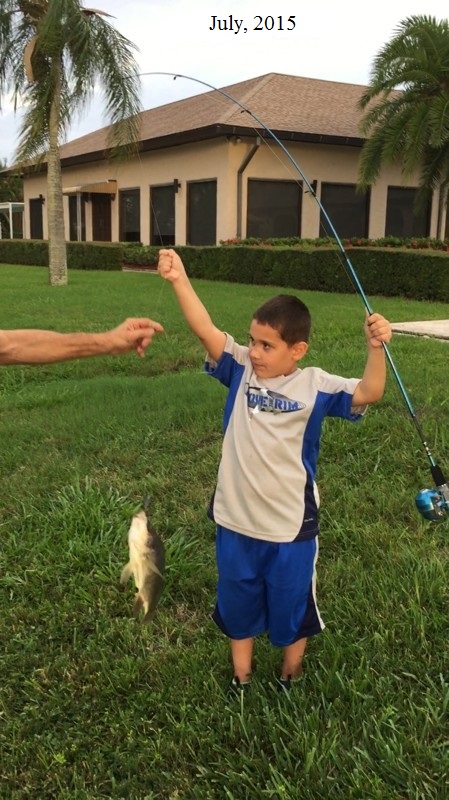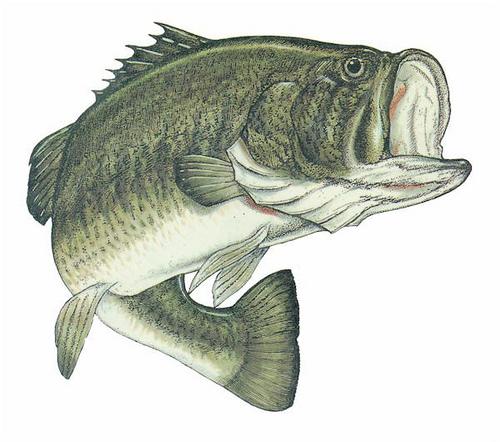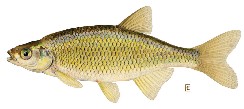
 Largemouth
Bass
Largemouth
Bass
The largemouth bass is the most popular freshwater fish among millions of anglers. Largemouth bass provide explosive strikes and jumps that make any day on the water an exciting one. They are found in every state in the United States because of excellent stocking programs. There are 2 subspecies of largemouth bass: the Florida largemouth and the northern largemouth. The Florida strain of largemouth existed in Florida originally, but with stocking programs, they are now found in most of the south and they are very prevalent in California and Texas. Florida strain largemouth don't live as long as northern strain largemouth, but they grow much faster and bigger. The typical Florida strain largemouth should get up to 10 to 12 pounds compared to 6 to 8 pounds for the northern strain largemouth. If the waters provide good structure, with a good food supply and a long growing season, Florida strain largemouth bass can weigh over 20 pounds whereas, the northern strain largemouth rarely exceeds 10 pounds.
Largemouth Bass in Estuaries
A coastal river flowing into the sea will create an estuary. The fresh and salt water mix together and this mixture is called brackish water. Brackish water can hold all types of salt water fish along with largemouth bass. Some bass anglers salivate at the chance of catching bass and a snook or a red fish on the next cast. The salt water will travel up the river until it reaches higher elevation. Rivers on flat terrain will have long estuaries. The rivers that have higher elevations before the sea will have much shorter estuaries. The bass in the brackish water feed on typical salt water bait fish and shellfish. They will eat mullet, hearing, shrimp and crabs. Fishing is best in brackish water during stable time periods. The time between tidal changes usually provides the best fishing.
An estuary is a semi-enclosed coastal body of water with one or more rivers or streams flowing into it, and with a free connection to the open sea. Estuaries are thus subject to both marine influences, such as tides, waves, and the influx of saline water; and riverine influences, such as flows of fresh water and sediment. As a result they may contain many biological niches within a small area, and so are associated with high biological diversity.
A bayou is a body of water typically found in flat, low-lying areas, and can either refer to an extremely slow-moving stream or river (often with a poorly defined shoreline), or to a marshy lake or wetland.
 Golden
Shiner
Golden
Shiner
Golden shiners, or shiners, are one of the best baits for catching bigger fish. They work well for bass, northern pike, pike, walleye, catfish and even muskie. The golden shiner's back is a green to olive shade, and the belly a silvery white. There may be a faint dark stripe along the sides. These shiners can grow up to a foot long, although most bait shops carry them in the 5 to 6 inch range. Most bass fishermen know how popular shiner fishing is in Florida. Most, if not all guides, use shiners in Florida because they are such a great bait. They catch lots of largemouth bass and many bass over 10 pounds are caught on shiners in Florida. You can purchase shiners up to a foot long in Florida bait shops and they can get very expensive. Depending on the size, you may end up spending $40 or $50 on a single day on the water fishing with shiners.